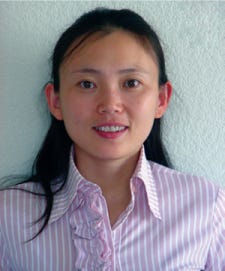Voices of Biotech
Podcast: MilliporeSigma says education vital to creating unbreakable chain for sustainability
MilliporeSigma discusses the importance of people, education, and the benefits of embracing discomfort to bolster sustainability efforts.
September 1, 2008
Q&A with the Scientific Advisors
THOMAS C. RANSOHOFF

vice president and senior consultant at BioProcess Technology Consultants, Inc.
How long have you worked for your current employer, and where did you work before that? I’ve worked for BioProcess Technology Consultants for six years (since 2002). Before joining BPTC as a senior consultant, I held senior positions in manufacturing, development, and operations for several biotechnology companies including Repligen, Dyax, and TranXenoGen.
What degrees do you hold, and from where? I hold BS and MS degrees, both in chemical engineering, from MIT and UC-Berkeley, respectively.
When and why did you get involved in the biotechnology industry? I had become interested in biochemical engineering at MIT and had an opportunity to join a start-up biotech company called Xoma in California after graduating from UC-Berkeley.
What interested you the most about it? I enjoy the intersection of the incredible science on which modern biopharmaceutical products are based and the technical, business, and operational capabilities needed to bring these products to market.
Which biologics does your company have currently on the market — or in later stages of clinical development? What kinds of production/economics-related tools and concepts do you have experience with there? As a consulting firm, BPTC does not have any products on the market or in the clinic. However, we are working with many companies that have marketed or clinical-stage biopharmaceuticals. We work with a range of process-economic modeling tools and production technologies in our business and now find willingness to implement/evaluate new technologies across the life-cycle of a product.
Who will be most interested in the subject matter of your sessions at the BPI Conference & Exhibition? The preconference workshop on single-use bioprocess systems should be of interest to anyone working with or considering implementation of disposable bioprocessing equipment — as well as to those interested in supplying to or investing in this market. The discussion forum on adopting new technology should be of interest to anyone working in a CMC role at biopharmaceutical or pharmaceutical companies — and to vendors of new technology equipment.
What do you expect them to “take away” with them? I expect a good discussion in that forum on the specific challenges and opportunities of new technology adoption in the biopharmaceutical industry.
Which presentations/sessions at the conference are you most looking forward to attending? I think the agenda for the conference looks very strong, so I’m looking forward to many of the presentations — and also to the chance to meet with and hear from exhibitors at the conference.
MANINDER HORA

vice president of process development at PDL BioPharma, Inc.
How long have you worked for your current employer, and where did you work before that? I have been with PDL BioPharma for two years, first as vice president of process development and, since March 2008, as vice president of product operations. I worked at Chiron Corporation (Novartis) before 2006 for 20 years, during the last five of which I held the position of vice president of process and product development.
What degrees do you hold, and from where? I have a PhD in bioengineering from the Indian Institute of Technology in Delhi (India) and was a Fulbright Scholar at the University of Washington.
When and why did you get involved in the biotechnology industry? What interested you the most about it? I joined the biotechnology industry in 1986 because I was excited about being part of an emerging highly technology knowledge-based industry. I wanted to be part of how things would shape up as technology, industry, academia, and regulators all would struggle a little bit but would eventually find a direction for application of these very promising technologies for helping human healthcare.
Which biologics does your company have currently on the market — or in later stages of clinical development? What kinds of production/economics-related tools and concepts do you have experience with there? We don’t have marketed products currently, but we have several humanized monoclonal antibodies in various stages of clinical development: daclizumab for multiple sclerosis and asthma, volociximab for various cancers, elotizumab for multiple myeloma, and PDL192 for solid tumors. We use design of experiments to scale up and optimize processes.
What were your main concerns in helping to put together the “Scaling Up” track? We want the audience to learn that there are multiple tools available to scientists — none of which by itself is a cure-all, but an appropriate tool selection is part of the design of scale-up of a product. Our main concern is the various overlapping theses that are being addressed by various tracks of this conference.
ELLEN L. MCCORMICK

director of bioprocess R&D in Pfizer Global Biologics at Pfizer Inc.
Who will be most interested in the subject matter of your session at the BPI Conference & Exhibition? anyone involved in moving biological molecules to market efficiently and well
What do you expect them to “take away” with them? new approaches to our work and industry perspectives on key issues
What were your main concerns in helping to put together the Scale-Up track? We sought quality, relevant talks largely with information not yet shared at other venues.
How long have you worked for your current employer, and where did you work before that? I have worked for Pfizer for 25 years.
What degrees do you hold, and from where? MS in microbiology from the University of Illinois.
SCIENTIFIC ADVISORS
Jeffrey C. Baker, senior research advisor in manufacturing sciences and technology at Eli Lilly and Co.
Roger A. Hart, scientific director of process development at Amgen Inc.
Maninder Hora, vice president of process development at PDL BioPharma, Inc.
Günter Jagschies, director of R&D in customer applications (protein separation) at GE Healthcare Bio-Sciences
Ellen L. McCormick, director of bioprocess R&D at Pfizer Global Biologics
R. Andrew Ramelmeier, vice president of manufacturing and process development at BioMarin Pharmaceutical, Inc.
Thomas C. Ransohoff, vice president and senior consultant at BioProcess Technology Consultants, Inc.
David H. Reifsnyder, principal scientist in process development (late-stage purification) at Genentech, Inc.
Abhinav Shukla, associate director of manufacturing sciences for Bristol-Myers Squibb Company
When and why did you get involved in the biotechnology industry? What interested you the most about it? Working in the biotech industry allows the pursuit of new scientific knowledge and real, near-term opportunities to improve the quality of people’s lives. It doesn’t get better than that.
Which biologics does your company have currently on the market — or in later stages of clinical development? Marketed biological products include Genotropin, Somavert, and Macugen. We have multiple compounds in development including CP-751,871, a monoclonal antibody for cancer indications.
What kinds of production/economics-related tools and concepts do you have experience with there? Too numerous to list — we model at all levels of the organization.
JEFFREY C. BAKER

senior research advisor in manufacturing sciences and technology at Eli Lilly and Co.
Who will be most interested in the subject matter of your sessions at the BPI Conference & Exhibition? I think the sessions which I am leading at the BPI Conference will be of interest to individuals who are more interested in investing their energy in understanding options and consequences than in the refinement of definitions.
What do you expect them to “take away” with them? I suspect people looking for “The Answer” will be disappointed, but I hope colleagues willing to participate in a conversation on principles and practice will take away useful insights that will help them make better decisions in their own contexts.
What were your main concerns in helping to put together the Scale-Up track? All of the scientific advisors want to provide programs that are first and foremost helpful. I have tried to stress the need to share broadly applicable principles of practice using actual examples and case studies. These elements together let us take home understanding that is far more useful than either alone.
How long have you worked for your current employer, and where did you work before that? I joined Eli Lilly & Company in 1988. I spent 14 years in bioprocess development and have spent the past six years in manufacturing science and technology.
What degrees do you hold, and from where? I have a BA in biochemistry and molecular biology from Northwestern University and a PhD in biochemistry from the North Texas State University. I did my postdoctoral work at the University of California at Berkeley.
When and why did you get involved in the biotechnology industry? I joined the bioprocess development group at Lilly in 1988 because I was becoming frustrated with being surrounded by excellent, innovative science that was having very little impact on society. I felt then, as now, that the capital intensity and complexity of sustainable biotech operations make bioprocess scale-up and commercialization the major hurdle to moving excellent science out of journals, laboratories, and specialized clinical settings and into my mother’s kitchen! The value proposition of biopharmaceuticals makes biopharm a good place to start — but to me, it’s really about putting responsible biotechnology into everyday life.
What interested you the most about it? Bioprocess development is a crummy job for specialists. However, if you can reconcile your biochemist hat with your engineering hat and your compliance hat and your entrepreneur hat and your legal hat and all the rest in a dynamic business environment, you can participate in the resolution of the most complex of puzzles. Combine that challenge with getting to meet families that have been profoundly impacted by “your” project and commercial biotechnology becomes about as much fun as any of us should be allowed to have!
Q&A with the Speakers
SUSHIL ABRAHAM

principal engineer in process development at Amgen Inc.
“Scale-Up of a Mammalian Cell Culture Process: Internal and External Technology Transfers,” 10:30 AM Wednesday 24 September 2008: Scale-down models enable robust process characterization studies and aid in process troubleshooting and resolution of issues prior to commercial manufacturing. This presentation addresses some of the limitations of scale down models in terms of achieving all end points for product quality and process performance. Examples for both upstream and downstream unit operations are provided to illustrate key concepts.
Who will be most interested in the subject matter of your presentation at the BPI Conference & Exhibition? scientists, engineers, and managers involved in process characterization and technology transfer activities
What do you expect them to “take away” with them? some real life examples of uses of scale-down models — and also their limitations
And which other presentations/sessions are you most looking forward to attending? case-study examples of possible pitfalls in scale-up
Briefly, what are one or two of the limitations of scale-down models that you’ll talk about? scale-down of bioreactors … differences in cell growth and viability as scaled up from laboratory/pilot to commercial scale … differences in agitator type and agitation/aeration strategies … rapid troubleshooting facilitated by scale-down models to ensure that a process is fixed prior to process validation
How long have you worked in biotech? 19 years
What degrees do you hold, and from where? bachelor’s in engineering from University College London.
When and why did you get involved in the biotechnology industry? My first job out of college was at British Biotechnology Ltd. in the United Kingdom. I’ve spent a significant part of my career (10 years) at Lonza Biologics, a contract manufacturing firm.
What interested you the most about this work? I’m interested by the dynamic nature of this industry — a combination of science and engineering disciplines — and its application to products that have an impact on people’s quality of life.
STEFANIE BRADY
bioprocess engineer at Human Genome Sciences, Inc.
“Application of CFD Modeling for Process Optimization in a New Large Scale Mammalian Facility,” 8:45 AM Wednesday 24 September 2008: During start-up of HGS’s 20,000 L scale facility, cell growth and titer were lower than previously observed at pilot scales. This presentation will show how computational fluid dynamic modeling was used to determine the cause of and solution to the scaling issue.
Who will be most interested in the subject matter of your presentation at the BPI Conference & Exhibition? What do you expect them to “take away” with them? I think a large audience of people will find my talk interesting. CFD is one of these technologies that is new to biotech. The industry is finding uses for the technology in many different areas. Although my talk is focusing on the application of CFD to bioreactors, the tools can be used in purification and formulation as well. Anyone in research, process development, or manufacturing will find the talk interesting when they see how CFD could be a beneficial tool in studying their area.
Were the lower cell growth and titer after scale-up a surprise in your project? The lower cell growth and titer weren’t a huge surprise. Prior to the first run in this vessel, we performed mixing studies in the tank; from those, we learned that the mixing time wasn’t ideal. After the first run, we were able to assess the performance against some process development data to determine a possible cause.
Was CFD your first recourse for finding the causes and solutions, or did you try other methods first? We used CFD as a tool to help us design a better agitation system that would reduce the issues we were seeing at this scale.
Which other presentations/sessions are you most looking forward to attending? I am most interested in attending Zhiwu Fang’s (Amgen) talk on CFD because it sounds similar to mine. I am hoping I can learn something from this one that I can take back and apply to our work on the subject. I also think all the talks in the use of scale-down models session sound very interesting.
How long have you worked in biotech? I have been in biotech for seven years.
What degrees do you hold, and from where? I hold a BS in biological systems engineering and a BS in biochemistry from Virginia Tech. I am currently pursuing an MS in chemical engineering at the University of Maryland.
When and why did you get involved in the biotechnology industry? During college, I really enjoyed classes in fermentation technology. Once I learned about the biotech industry from my coursework, I pursued a career in the field after graduation. I like the mix of biology and engineering that gives the field the challenge.
What interested you the most about this work? Because biotech is a fairly new field, a lot of advancements are being made. Just in the seven years I have been in the field, I have seen new technologies emerge and old ones improve. It makes the field exciting because it is changing daily.
This year’s BPI Conference is happening in Anaheim,CA, home to the original Disneyland. Have you ever been there before? I haven’t been to Disneyland since I was 14. I am excited to get a chance to come back. As you know, it’s “The Happiest Place on Earth.”
Do you have any recommendations for fun outside the conference, great restaurants to try, etc. that you’d like to share with fellow conference goers? I plan on visiting the California Adventure Park, which is new since I was here last. I am traveling with my daughter, who will be 21 months old, and I’m sure she can’t wait to meet Mickey Mouse!
JEREMY CONNER
senior engineer at Amgen Inc.
“PCA/PLS Similarity Factors for Batch-to-Batch Comparisons,” 2:30 PM Tuesday 23 September 2008: This talk addresses pairwise comparison of fermentation and cell culture batches. In early development, there may only be a few batches available, from which performance guidelines must be set for manufacturing. Similarity factors from PCA/PLS models can be used for comparison of batches. This technique compares process models to look for differences in input-output relationships. The talk will discuss the similarity factor approach and include examples using pilot data.
Who will be most interested in the subject matter of your presentation at the BPI Conference & Exhibition? Industry engineers in process development will be most interested.
What do you expect them to “take away” with them? There are multivariate statistical techniques available to help solve many of the common problems we struggle with in the biotechnology industry. Proper application of these methods can yield interesting new insight into processes.
And which other presentations/sessions are you most looking forward to attending? “Strategic Scale-up Decisions to Accelerate Process Development,” “Advances in Cell Line Development and Clone Selection,” and “Evolution in Media Development and Feed Strategies”
What specific gains or advantages has Amgen discovered related to these types of batch-to-batch comparisons? These batch-to-batch comparisons have been used to confirm results in large DOE experiments. At scales in which only a few batches are available, the multivariate tools presented in the talk have been very helpful in diagnosing scale-up issues and identifying subtle relationships that assist in root-cause investigations.
How long have you worked in biotech? four years
What degrees do you hold, and from where? BS in chemical engineering from Rose-Hulman Institute of Technology; PhD in chemical engineering from the University of California at Santa Barbara

When and why did you get involved in the biotechnology industry? In 2004, my graduate research group was doing some work with Amgen. I was interested in applying multivariate statistical techniques and multivariate control strategies to improve understanding of complex biological processes.
What interested you the most about this work? I think the opportunity to work in a research and development environment, solving problems before they reach production scale, is very interesting.
ZHIWU (DAVID) FANG
principal IS informatics analyst at Amgen Inc.
“Use of Computational Fluid Dynamics (CFD) to Identify and Resolve Cell Culture Issues Observed at Production Scale during Technology Transfer,” 8:15 AM Wednesday 24 September 2008: We present a numerical case study on the environment to which cells are exposed in mechanically agitated and sparged bioreactors. The most relevant parameters are compared for two modeled production scale bioreactors with different designs and process conditions. Such information helps us to understand the culture process performance issues encountered during technology transfer, and to identify an optimal operating parameter design space.
Who will be most interested in the subject matter of your presentation at the BPI Conference & Exhibition? The audience for my talk could consist of process engineers and computational fluid dynamics practitioners.
What do you expect them to “take away” with them? The take-away point is that by taking computational fluid dynamics technically as an alternative approach from experimental, one can provide indispensable quantifiable multiparameter information to troubleshoot cell damage in a sparged bioreactor.
And which other presentations/sessions are you most looking forward to attending? Because my daily work covers every aspect of a biotech company, from data processing to physics to biology, I would be interested in attending all sessions.
Can you give me a layperson’s definition of CFD? CFD is a numerical analysis tool used to solve partial differential equations that govern fluid flow, physics, and chemical reactions
Has Amgen found this approach to be successful? The technique has been adopted by Amgen for five years now and has made significant contribution to Amgen.
What advantages does it have over other methods of managing or creating design space? The advantages over other approaches include but are not limited to
Reducing the number of expensive experiments (multidimensional operating conditions can be explored and adjusted thus to find the optimal parameter space at the expense of computing resources)
Providing indispensable information that is otherwise unavailable through experimental approach (to identify and resolve issues that occurred in scale-up and technology transfer, to suggest options for mitigating process transfer risks, and to optimize process performance)
Allowing us to better understand key aspects of unit operations based on the first principles.
How long have you worked in biotech? I’ve worked in biotech for five years.
What degrees do you hold, and from where? I have a PhD in mechanical engineering from the University of Sydney in Australia.
When and why did you get involved in the biotechnology industry? My background and expertise in suspension rheology and computational mechanics fit in a position of internal technical consultant on mathematics, physics, and engineering.
What interested you the most about this work? What interested me the most is being about to troubleshoot and find solutions to top priority and high-impact issues.
RICHARD FRANCIS
director of process science at Protherics plc
“Development of a High Throughput Manufacturing Process for an Ovine Polyclonal Fab Fragment,” 11:30 AM Wednesday 24 September 2008: In the original conception small scale process studies’ multi-factorial design considerations were purely related to the actual experiment. Their meaning now is to expand the design space, product characterization forced degradation studies as well as comparability elements to support perhaps several manufacturing sites and multiple sourced raw materials. This presentation will cover these aspects in relation to a large scale (>120 Kg IgG per purification batch) ovine Fab fragment process and the process development linkage with the establishment of a commercial supply chain.
Who will be most interested in the subject matter of your presentation at the BPI Conference & Exhibition? hopefully other process developers and those now considering how to process hundreds of kilograms of antibody in a single purification batch
And which other presentations/sessions are you most looking forward to attending? I am keen to learn more of the FDA’s and industries’ positions on quality by design and other initiatives.
What particular characteristics of an ovine polyclonal Fab fragment prompted Protherics plc to begin the original experimentation in multi-factorial design? Are the lessons learned broadly applicable in the biotech industry? It is interesting to see how worked up others are getting at the high antibody titers now being delivered by the cell culture work. But for us at Protherics, working with sheep serum, we routinely handle titers in excess of 50 g/L in a mass with a multitude of other proteins, so it it not a new problem — and it is resolvable! Factorial experimental design facilitated the rapid development of a robust manufacturing process and enabled us to map and define all processing parameters in advance of scale-up and thus was cost effective and also prevented the “voyage of discovery” typically associated with scale-up. We had a map and knew what direction to go as a result of our small-scale studies. I would say most definitely that these lessons are of value to the rest of the biotech industry. Hopefully our experience and demonstration of an ability to manufacture antibodies in hundreds of kilogram batch sizes will encourage those considering the implications of such operations.
How long have you worked in biotech? When and why did you get involved in the biotechnology industry? What interested you the most about this work? I have worked in the field of biotechnology for over 25 years since the early eighties, when monoclonals were new and still to be proven. My interest then (as now) is development of treatments that will be of use against disease, and it has been rewarding over the years to have been part of teams that successfully developed treatments now in use bringing benefit to many.
This year’s BPI Conference is happening in Anaheim, CA, home to the original Disneyland. Have you ever been there before? Never been before so looking forward to visiting Disneyland.
YING ZHU

scientist II in upstream processing at PDL BioPharma
“Use of a Scale-Down Model to Troubleshoot Cell Damage in Large Bioreactors,” 9:15 AM Wednesday 24 September 2008: We have developed a scale-down model to investigate the effect of high gas sparger velocity on cholesterol-independent NS0 cells. The model correlates well with our observations of low cell viability and low antibody titer in some 600 L fed-batch cell cultures. This model has been used to develop design criteria for gas spargers in large bioreactors (e.g. 10k L) for high cell density antibody production.
Who will be most interested in the subject matter of your presentation at the BPI Conference & Exhibition? People who design bioreactors in manufacturing and people who develop and scale up cell culture processes in process development will be interested in this topic.
What do you expect them to “take away” with them? In the past, cell damage at the gas sparger has not been considered as a primary cause of cell death for animal cell culture. However, as processes scale up, a need arises to increase gas flow for better oxygenation and CO2 removal, particularly in high-cell-density and high-productivity bioreactor cultures. We have demonstrated that increased gas sparging can result in significant cell damage at the sparger site. Hopefully, people can benefit from my study with better understanding of gas-sparge-associated cell damage and learning to develop appropriate methods to minimize such damage for a successful process scale-up.
And which other presentations/sessions are you most looking forward to attending? I would be interested in attending the session on cell culture and upstream processing.
Once the scale-down model reveals what is causing the low cell viability and low antibody titers in some 600-L cultures, how difficult will it be to transfer that information to full-scale production? Are you able to predict the kinds of changes that might be indicated? The results from the scale-down model were substantiated in the full-scale production. Our scale-down model coupled with cell growth kinetics model serves as a useful tool to predict cell damage due to gas sparge at large scale manufacturing.
How long have you worked in biotech? I have worked in biotech for over five years.
What degrees do you hold, and from where? I obtained my PhD in chemical engineering from Ohio State University.
What interested you the most about this work? I enjoy working in the biotech industry, which allows me to apply my knowledge for developing antibody therapeutics to improve the lives of the patients.
AIMEE LEHMAN
manufacturing technical specialist at Genentech, Inc. (Vacaville)
“Using Scale Down Models at Various Stages During Commercialization of Biopharmaceuticals,” 11:00 AM Wednesday 24 September 2008: Scale down models are not just a good idea, but they are essential during product transfers and during the entire commercial life cycle. This case study will present interesting examples and learning from both upstream and downstream processes where scale down models were used, sometimes successfully and sometimes not so successfully, to enable rapid product transfer, troubleshooting during commercial production and to drive continuous improvement of commercial processes.
Who will be most interested in the subject matter of your presentation at the BPI Conference & Exhibition? Those with a background in upstream and or downstream processing that are involved in process development, in manufacturing technical support, and manufacturing will benefit most from this presentation.
What do you expect them to “take away” with them? I expect people to take away the importance of having a scale-down model for both upstream and downstream processes throughout the entire transfer and commercial life of your process. It is a key factor in process development, transfer, troubleshooting, and continuous process improvements.
In which area (rapid product transfer, troubleshooting, continuous improvement) has Genentech found scale-down models to be the most valuable? Having a reliable scale-down model is most valuable in the area of continuous improvement. Using the scale-down model enables development and proof-of-concept work that would be impossible to execute in a manufacturing environment. Although small-scale models are nice to have for rapid product transfer and troubleshooting, there are other approaches that may be taken to support these efforts.
How long have you worked in biotech? I have worked in biotechnology for 12 years.
What degrees do you hold, and from where? I hold a BS in microbiology from Arizona State University.
When and why did you get involved in the biotechnology industry? I started working for Genentech right out of college.
What interested you the most about this work? I wanted to work for Genentech because of the amazing opportunity to be a part of making pharmaceuticals for unmet medical needs while surrounded by extraordinarily talented people. I saw this as a great opportunity to use my scientific knowledge while making a difference in people’s lives.
1.) Carter, D. 2006. Vendor Voice: Designing a Production Laborotory for Clinical Materials — A Collaborative Endeavor Allows Room to Grow. BioProcess International 4:48-50.
2.) DeSain, C. 2006. Product Risk Profile Documents: Effective Communication Between Product Development and Operation. BioProcess International 4:18-26.
3.) Forgione, P, and M. Van Trier. 2006. Vendor Voice: The End for Stainless Steel?. BioProcess International 4:S58-S62.
4.) Jacques, A. 2006. Managing a Biopharmaceutical Supply Chain — New Applications for Classical Techniques. BioProcess International 4:28-22.
5.) Kline, JB. 2006. Vendor Voice: Whole-Genome Evolution Technology — Improving Protein and Antibody Yields in Scalable Mammalian Cell Based Manufacturing. BioProcess International 4:S42-S47.
6.) Langer, E, and J. Ranck. 2006. Capacity Bottleneck Squeezed By Downstream Processes. BioProcess International 4:14-18.
7.) Lias, RJ, and SD. Perry. 2006. Case Study of a Clinical-Scale CGMP Biopharmaceutical Production Facility, Part Two — Facility Design. BioProcess International 4:12-18.
8.) Lundblad, RL, GT Lundblad, and C. Burgess. 2006. Accelerating Biopharmaceutical Product Development. BioProcess International 4:28–32-22–28.
9.) Montgomery, SA. 2006. Chapter Five: Operations and Quality Systems — Building in Success. BioProcess International 4:S58-S71.
10.) Schönfelder, M, and P. Schlenke. 2007. Keep the Whole Process in View: From Stable Cell Lines to Robust Manufacturing Processes. BioProcess International 5:70-77.
11.) Scott, C. Process Development: Turning Science Into Technology. BioProcess International 4:S24-S41.
12.) Shipston, N. 2006. Technical Transfer of Manufacturing Processes from Client Sites to a CMO. BioProcess International 4:S40-S42.
13.) Singh, M, and D. Dai. 2006. Clinical Supplies Excellence — Are You Set Up to Succeed?. BioProcess International 4:12-16.
14.) Taylor, SC. 2006. The Development Journey: CMOs as Traveling Companions. BioProcess International 4:S18-S20.
15.) Wilson, JS. 2006. A Fully Disposable Monoclonal Antibody Manufacturing Train. BioProcess International 4:S34-S36.
You May Also Like